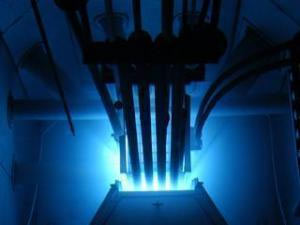There were high-fives all around NC State University's PULSTAR nuclear reactor earlier this month, as students, staff and faculty celebrated a new scientific benchmark - they had just produced the most intense operating positron (antimatter electron) beam anywhere in the world.
"There is a reactor in Munich, Germany, that has been generating those types of radiation beams for some time now, and our analysis of the data shows that we have exceeded what they have reported," said Dr. Ayman Hawari, associate professor of nuclear engineering and director of the Nuclear Reactor Program at NC State.
"Our excitement comes from the realization that now it has become possible to achieve certain objectives that were not possible before," he said. "Thinking from a scientific point of view, you immediately think, 'We're going to be able to do what we thought we should do.'"
"The idea here is that if we create this intense beam of antimatter electrons - the complete opposite of the electron, basically - we can then use them in investigating and understanding the new types of materials being used in many applications," Hawari said.
Now that the intense beam has been generated, members of NC State's nuclear engineering program and their collaborators will turn their focus to developing instrumentation such as antimatter spectrometers and potentially long-discussed antimatter microscopes, which would allow for a much more detailed look into materials at the atomic level.
Success was two years in the making - the positron project began in 2005 as a collaboration between NC State, the University of Michigan and Oak Ridge National Laboratory with the support of the U.S. Department of Energy and the National Science Foundation.

